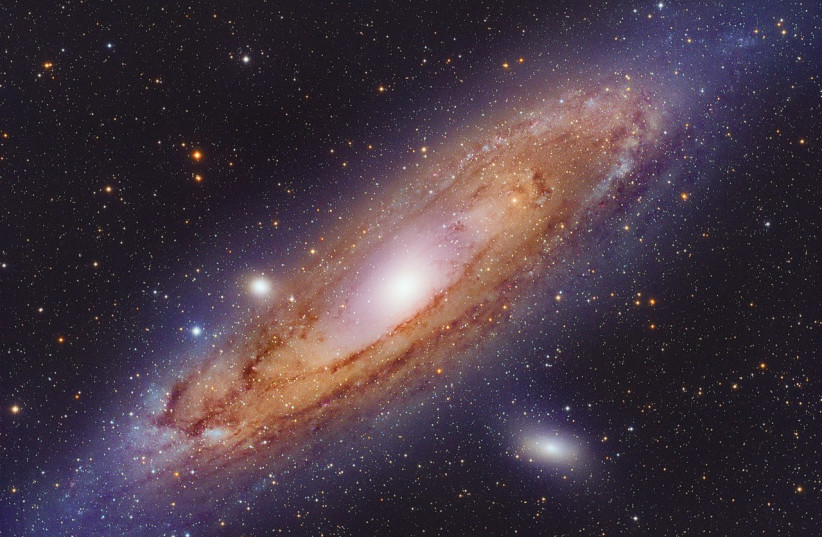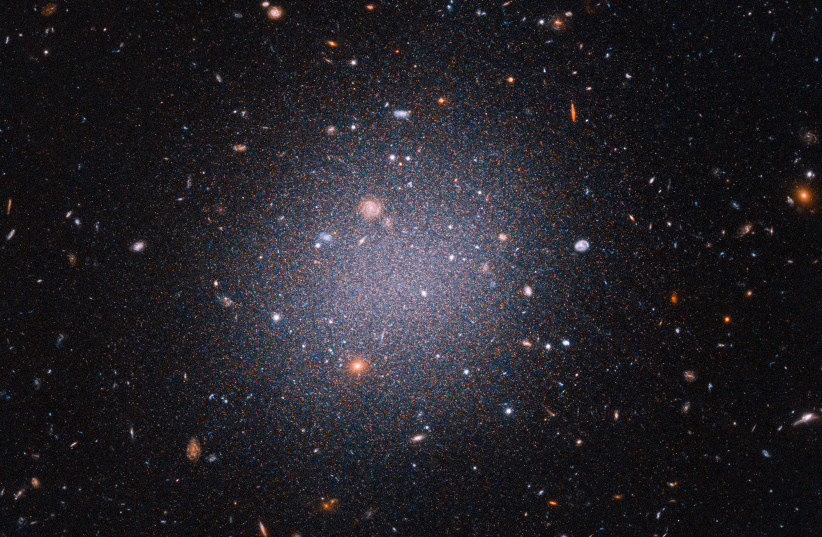Radio wave research has big implications for the field of astrophysics - study
The new tools have the potential to open up exciting new possibilities for the study of astrophysics and other related fields.
A new study from the Dunlap Institute for Astronomy and Astrophysics at the University of Toronto has developed new tools to more accurately calculate the probability of multiple radio wave bursts from similar locations, providing valuable insights into the origins and behavior of cosmic events.
These findings, which have been published in the peer-reviewed Astrophysical Journal, can help to better understand the origins of cosmic events and open up exciting new possibilities for the study of astrophysics and other related fields.
According to Dr. Ziggy Pleunis, a post-doctoral researcher at the Institute, the new tools have the potential to significantly impact the field of astronomy.
This Hubble Space Telescope snapshot reveals an unusual ''see-through'' galaxy. (credit: NASA/ESA/STSCI/ZILI SHEN (YALE)/PIETER VAN DOKKUM (YALE)/SHANY DANIELI (IAS))
What can these new tools help with?
The Canadian Hydrogen Intensity Mapping Experiment (CHIME) and other radio telescopes have made significant strides in detecting fast radio bursts (FRBs) in recent years, with the number of detections growing from a few tens to thousands.
Dr. Pleunis attributes this growth to CHIME's capacity to scan the entire northern sky every day, giving it an edge over other telescopes in discovering FRBs.
The study also found that some FRBs initially thought to be isolated instances or "one-off" events may actually be repeating but have not been observed for long enough periods to detect subsequent bursts from the source.
In addition, the team was able to identify likely associated galaxies for two of the repeating FRB sources they observed. This represents a significant step forward in understanding the origins and behavior of FRBs.
Dr. Pleunis noted that studying repeating FRBs can provide valuable insights into the environments in which stellar explosions occur.
FRBs are thought to be produced by the remnants of these explosions, and by investigating them in detail, scientists can learn more about the end stages of a star's life and the materials that are ejected and returned to the galaxies where FRBs are detected.
Overall, this research has far-reaching implications for our understanding of the universe as a whole. By studying these powerful, short-lived radio signals, scientists can gain valuable insights into the complex processes that govern the formation and evolution of stars and galaxies.
PLEASE RECOMMEND THIS PAGE & FOLLOW THE SPUTNIKS ORBIT AT HTTPS://DISQUS.COM/HOME/FORUM/THESPUTNIKSORBIT-BLOGSPOT-COM




No comments:
Post a Comment